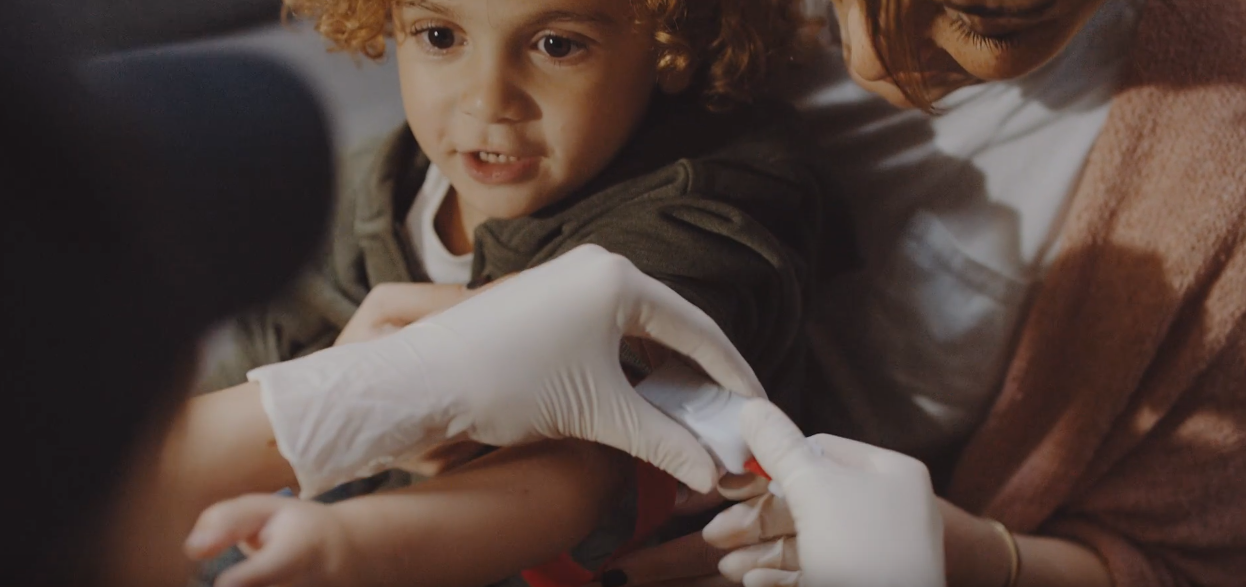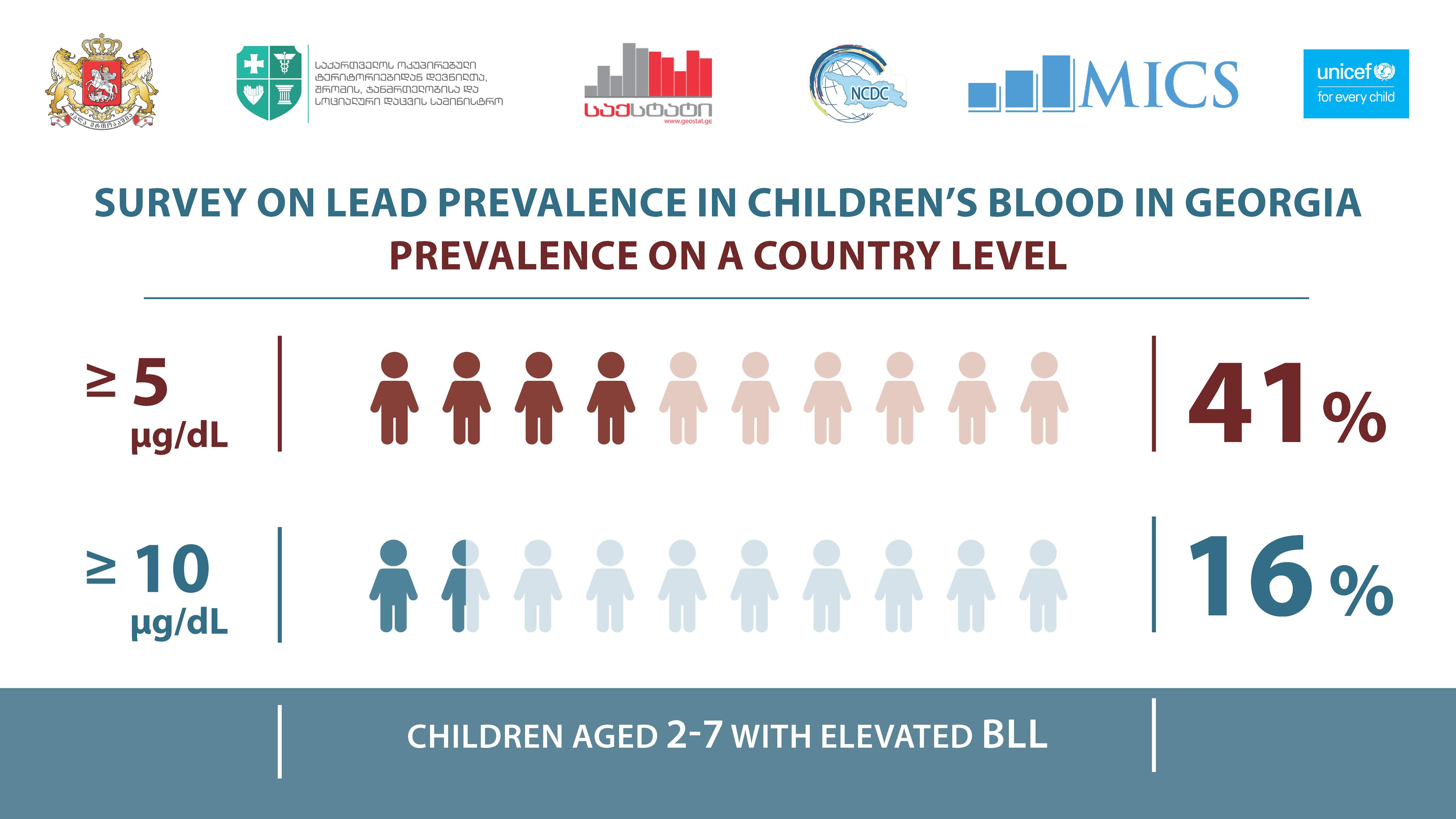
High levels of lead have been found among children in Georgia in a nation-wide study from UNICEF.
Adjara, Guria, Samegrelo and upper Svaneti were the most lead-contaminated regions, according to the study by the UN’s children’s agency.
On 23 April, UNICEF Georgia unveiled the findings of its study on lead prevalence in children's blood.
According to the test results, 41% of the 1,578 children tested via venous blood samples had lead levels equal to or more than 5 microgrammes per deciliter (µg/dL). The level of lead in blood among 16% from those matched or exceeded 10 µg/dL.

According to the summary of the study released by UNICEF Georgia, the results show a strong prevalence of lead in the blood of children residing in Georgia’s western regions, with children in the Autonomous Republic of Adjara having the highest levels.

Lead is a naturally occurring toxic metal that concentrates in blood and can cause poisoning. It is usually found in food, construction materials and industrial paint, and can also be found in toys, furniture, ceramic dishware, and jewellery containing leaded paint.
Chronic exposure to lead can result in damage to internal organs and the nervous system and can be especially harmful to pregnant women and to the nervous system and brain development of young children.
While there is no accepted ‘safe’ level of exposure for humans, 5 µg/dL is used by international health advocacy groups like the World Health Organisation as a threshold at or above which intervention is advised.
‘Important but not alarming’
Following the unveiling of the results, Health Minister Davit Sergeenko told the media that the results were 'important but not alarming’.
Amiran Gamkrelidze, the Director of the Georgian National Centre for Disease Control and Public Health (NCDC), also advised against ‘panic’, stressing that 59% of the children tested did not have elevated levels of lead.
He said that 10 µg/dL represented the threshold for a ‘slightly elevated’ level.
Gamkrelidze refused to provide possible reasons behind the elevated levels of lead among children tested in Georgia’s western regions, saying it was a matter for further studies. However, he indicated that areas that were formerly used as military bases were contaminated, but did not provide further details.
The health ministry said they had already outlined medical protocol guidelines for early identification and management of lead exposure in children and had ‘planned an intervention’ in 16 cases in which lead levels of a child exceeded 30 µg/dL.
The ministry said they planned to follow-up on the study results and identify the sources of contamination in specific areas by re-taking blood samples and conducting an additional study of the environment.
Sources of contamination not identified yet
In 2017, the New York City Department of Health and Mental Hygiene advised residents against consuming spices originated from Georgia. Theses included marigold, Svan salt, ajika powder, and khmeli suneli, among others.
Initially, the Georgian National Food Agency dismissed reports of contaminated food products, but in February 2018, they decided to ban the sale of Georgian spices by individual entrepreneurs and obliged larger producers to seal and label their products.
The results unveiled on 23 April were a part of a wider survey that gathered data on a number of factors concerning child welfare in Georgia.
Upon the request of Georgia’s Centre for Disease Control, UNICEF included blood tests of children in the survey for the first time in its global practice.
Unlike previous small scale studies, the MICS, which visited over 1,500 Georgian households and collected blood samples from children aged between two and seven, is representative enough for the authorities to act on.
Georgia’s National Statistic Office, GeoStat, was responsible for carrying out the fieldwork for the survey, while the findings were the result of analysis conducted by the Italian National Institute of Health (ISS). According to UNICEF, the ISS used Inductively Coupled Plasma Mass Spectrometry, ‘the most accurate method’ for testing lead levels.
The Estonian Ambassador to Georgia, Kai Kaarelson, hailed the study. In September 2018, the ambassador and other members of the diplomatic service announced they had discovered ‘dangerous’ lead levels in their blood.
‘Children are the most vulnerable group regarding this issue and of course, the next necessary step should be to identify the sources of the lead exposure’, Kaarelson told OC Media. ‘Only then effective steps can be taken to eradicate this problem.’
Possible factors
Nino Chkhobadze, co-chair of advocacy group the Greens Movement of Georgia, told OC Media that comprehensive data was still not available to establish the sources of lead contamination.
According to her, owing to recent media coverage, Georgians had become more informed about sources of lead exposure other than Georgian traditional spices.
‘Now they know about industrial paints, construction material, toys, and other things as potential sources’, Chkhobadze said.
She noted that the ‘western Georgia, especially a Black Sea coastline, was significantly polluted’ as a result of the 1986 Chernobyl nuclear disaster.
‘Radioactive gases are characterised by a chain of radioactive decay ending up as stable isotopes. Lead is among those stable elements. A rise of lead exposure in the environment could be related to this’, Chkhobadze told OC Media.
According to her, acid rains cold also account for some lead contamination.
As Chkhobadze explained, acid rain are the result of the interaction of sulfur dioxide and nitrogen oxides, released into the atmosphere through human activities, with oxygen and water and other elements, creating acidic pollutants.




 24 April 2019
24 April 2019


